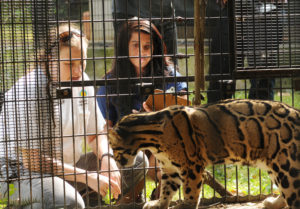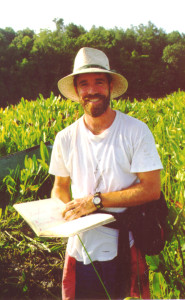Smithsonian Partnership Lets Students Explore Endangered Species

Thanks to a new partnership with the Smithsonian-Mason School of Conservation, Mary Washington students will soon have the opportunity to study clouded leopards and other endangered species with Smithsonian scientists. Photo by Evan Cantwell/George Mason University.
Imagine getting up close and personal with the world’s most endangered species – and then having the chance to save them.
Thanks to a partnership with the Smithsonian-Mason School of Conservation (SMSC), Mary Washington students will soon have that experience. They’ll spend a semester working directly with these animals and learning from Smithsonian scientists and George Mason University professors at the Smithsonian Conservation Biology Institute, nestled at the foot of the Blue Ridge Mountains. The agreement comes just as UMW’s biology department introduces a new major in conservation biology. Read more.
Biology Professors Present at National Conference
Deborah O’Dell and April Wynn presented a poster titled “Transforming the Biology Major Through Course Based Research” at the AAC&U/PKAL meeting “Transforming Undergraduate STEM Education” held Nov. 4-5 in Boston. The poster was co-authored by O’Dell and Wynn and Biology Professors Andrew Dolby, Lynn Lewis, Alan Griffith and Deborah Zies. The presentation described changes in the biology major that ensure that every biology student participates in authentic research before they graduate.
Griffith Publishes Rare Plant Research in Natural Areas Journal
Alan Griffith, Professor in the Department of Biological Sciences, will publish his research article titled “Secondary Dispersal in Aeschynomene virginica: Do Floating Seeds Really Find a New Home?” His article will appear in the Natural Areas Journal in October 2014. Published by the Natural Areas Association, this journal disseminates cutting-edge research, best practices and the newest knowledge related to natural areas. Dr. Griffith’s article describes and explains the appearance of the rare plant Aeschynomene virginica on the site of a recently removed dam in New Kent County, Virginia. This information is part of his ongoing research to understand how to protect this rare plant of Virginia’s freshwater, tidal wetlands.
